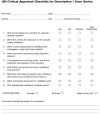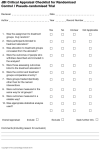Quality of Life Changes in Acute Coronary Syndromes Patients: A Systematic Review and Meta-Analysis
- PMID: 32967168
- PMCID: PMC7558854
- DOI: 10.3390/ijerph17186889
Quality of Life Changes in Acute Coronary Syndromes Patients: A Systematic Review and Meta-Analysis
Abstract
There is little up-to-date evidence about changes in quality of life following treatment for acute coronary syndrome (ACS) patients. The main aim of this review was to assess the changes in QoL in ACS patients after treatment. We undertook a systematic review and meta-analysis of quantitative studies. The search included studies that described the change of QoL of ACS patients after receiving treatment options such as percutaneous coronary intervention (PCI), coronary artery bypass grafting (CABG) and medical therapy (MT). We synthesized findings using content analysis and pooled the estimates using meta-analysis. We used the PRISMA guidelines to select and appraise the studies and report the findings. Twenty-nine (29) articles were included in the review. We found a significant improvement of QoL in ACS patients after receiving treatment. Particularly, the meta-analytic association found that the mean QoL of patients diagnosed with ACS was higher after receiving treatment compared to baseline (overall pooled mean difference = 31.88; 95% CI = 31.64-52.11, I2 = 98) with patients on PCI having slightly lower QoL gains (pooled mean difference = 30.22; 95% CI = 29.9-30.53, I2 = 0%) compared to those on CABG (pooled mean difference = 34.01; 95% CI = 33.66-34.37, I2 = 0%). The review confirmed that QoL of ACS patients improved after receiving treatment therapies although varied by the treatment options and patients' preferences. This suggests the need to perform further study on the QoL, patient preferences and physicians' decision to prescription of treatment options.
Keywords: acute coronary syndrome; coronary artery bypass grafting; percutaneous coronary intervention; physician therapy; quality of life; systematic review.
Conflict of interest statement
The authors declare no conflict of interest. The funder had no role in the design of the study; in the collection, analyses, or interpretation of data; in the writing of the manuscript, or in the decision to publish the results.
Figures







References
-
- Harjola V.-P., Parissis J., Bauersachs J., Brunner-La Rocca H.-P., Bueno H., Čelutkienė J., Chioncel O., Coats A.J.S., Collins S.P., de Boer R.A., et al. Acute coronary syndromes and acute heart failure: A diagnostic dilemma and high-risk combination. A statement from the Acute Heart Failure Committee of the Heart Failure Association of the European Society of Cardiology. Eur. J. Heart Fail. 2020;22 doi: 10.1002/ejhf.1831. - DOI - PubMed
-
- Amsterdam E.A., Wenger N.K., Brindis R.G., Casey D.E., Ganiats T.G., Holmes D.R., Jaffe A.S., Jneid H., Kelly R.F., Kontos M.C., et al. 2014 AHA/ACC Guideline for the Management of Patients With Non–ST-Elevation Acute Coronary Syndromes. Circulation. 2014;130:e344–e426. doi: 10.1161/CIR.0000000000000134. - DOI - PubMed
Publication types
MeSH terms
LinkOut - more resources
Full Text Sources
Miscellaneous

